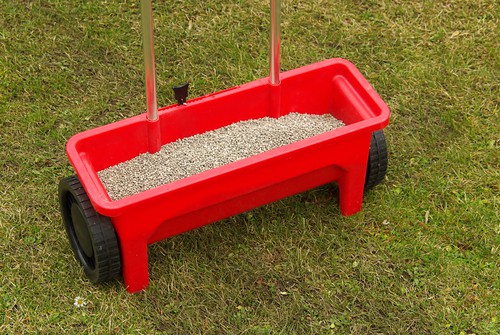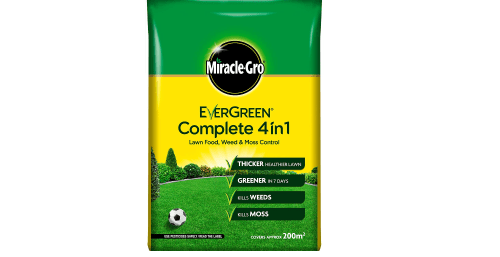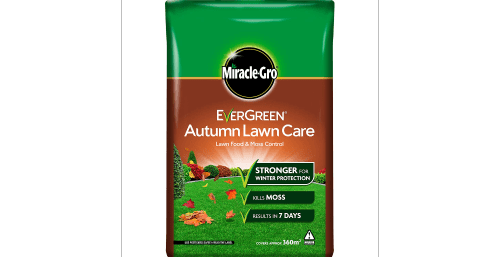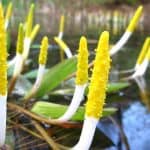Last updated on January 21st, 2020
Our site is reader supported, this means we may earn a small commission from Amazon and other affiliates when you buy through links on our site.
Your lawn needs regular care in the form of oxygen, water, and food and spring is a good time to start your lawn care routine. Without the right nutrients, your grass will use up any reserves they can find in the existing soil and eventually turned very thin and pale. If you don’t provide your lawn with regular feeding it also becomes more susceptible to invasion by things like moss and weeds which thrive in low nutrient areas. By providing your lawn with proper food when it’s necessary you can grow a stunning lawn that is green and healthy. Best of all most spring and autumn lawn feeds also incorporate weed and moss killer.
So, which lawn food should you use? The best lawn fertiliser is going to be something that feeds your lawn and gives it protection against weeds at the same time. They don’t all do that so you want to make sure that you are looking for a comprehensive product that doesn’t have to be applied more than twice per year, usually Spring and Autumn.
We highly recommend you apply with a lawn spreader
Although lawn feed can be applied by hand, we strongly recommend using a lawn spreader as you you apply it at the wrong rate or apply too much it will burn the lawn and kill the grass. The best way to avoid this is to use a lawn spreader which will apply it at the correct rate. Check out our lawn spreader reviews here.

When to feed a lawn
Feed lawns in Spring and Autumn
The best time to feed your lawn is in the spring and the end of summer/Autumn, usually in April and September. You really don’t want a product that you have to apply more than once or twice per year. However, you can get other lawn feeds, usually which you apply in liquid form for topping up in summer if needed. However, if you treat your lawn in Spring and Autumn this is usually not needed.
We also recommend scarifying your lawn in Spring and Autumn too
Spring and summer lawn feeding
If you are feeding your lawn in the spring or summer you want to find a product that not only has the fertiliser your lawn needs but also has moss control and weed killers. Moss starts to make its way into your lawn during the wintertime so adding food to your lawn at the beginning of Spring that contains this element will help you to kill off any remaining infiltrators. You also want to add something that kills the weeds so that they are controlled at the beginning of Spring and not allowed to run rampant throughout the rest of the year.
You can see our recommended lawn feeds here

Once you have control over the weeds and the moss you can transition in the summer to a fertiliser that’s just lawn feed if needed such as a liquid lawn feed you can attach to your hose. This is something that works really well if you have a dry summer because you can water your lawn and give it the nutrients it needs to stay thick and green concurrently.
On that note, if the weather gets particularly hot and your grass stops growing well, don’t use any food. Adding lawn fertilisers during a dry spell will stress your lawn out even more and leave it to accept to more damage. If this happens, simply stop feeding your lawn until it is raining for several days enough to thoroughly soaked the lawn. After that, you can resume your regular feeding schedule as necessary.
Winter lawn feed – preparing your lawn for winter

You can provide your grass with another type of food during the autumn which focuses on helping it grow at a slightly slower rate so that it’s still green but not nearly as lush as it is in the springtime. This type of food also prepares your lawn for the cold weather ahead by building up the root structure underground. With a winter-based feed usually sold as Autumn lawn care as pictured above, you want to look for something that helps your lawn prepare for the cooler, wetter winter weather but also has an element of moss control, something that starts to infiltrate during the winter. This winter-based food will be lower in nitrogen because you don’t want your lawn to start growing more top growth. That top growth ends up easily burnt by winter frost so instead, you want your lawn to focus on root growth.
Whenever you decide to feed your lawn make sure that you prepare it properly for feeding by scarifying, raking, and mowing at least 3 days in advance of any application. When you apply your lawn feed follow the directions specific for that seasonal food and then lightly water afterwards so that the food has a chance to really soak in.


